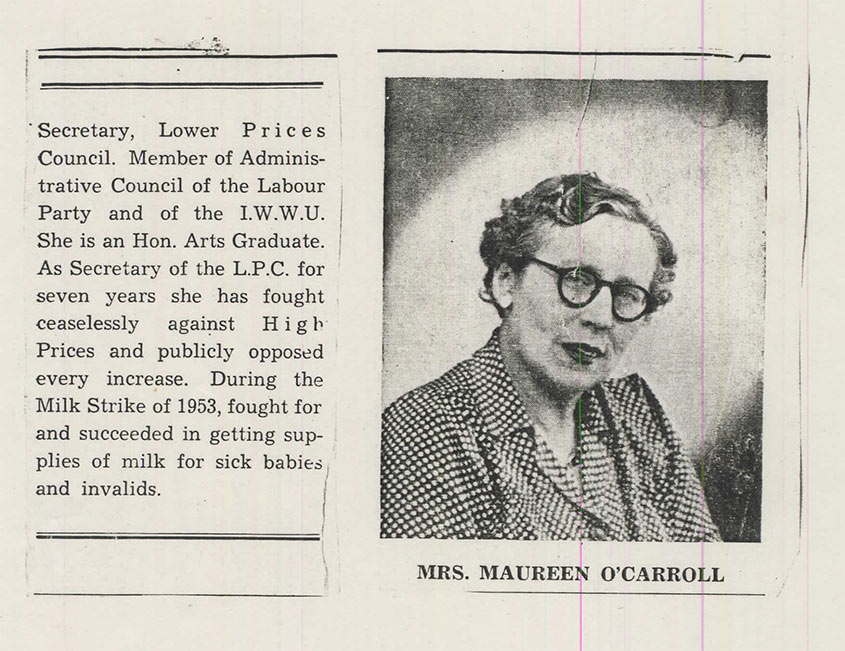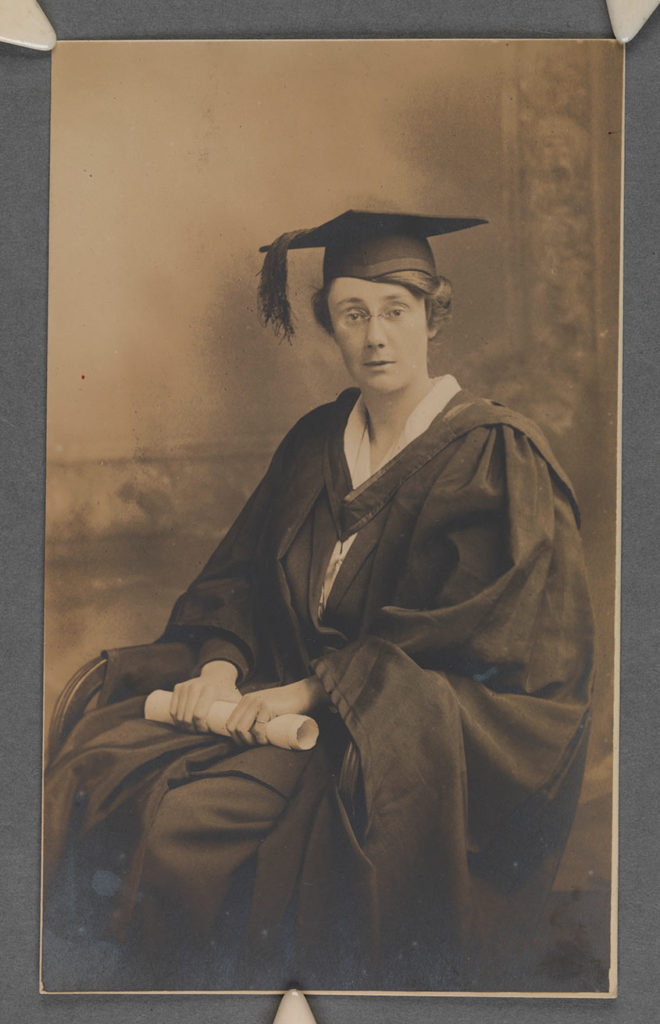1921
100 Years of Women in Irish Politics and Public Life
The Pop-Up Museum showcasing 100 years of Women in Politics and Public Life was launched in December 2018 to mark the centenary of the introduction of voting rights for women.

1921
The Pop-Up Museum showcasing 100 years of Women in Politics and Public Life was launched in December 2018 to mark the centenary of the introduction of voting rights for women.

This 100 Year Journey was compiled to highlight the complexity and diversity of women’s experience over the past 100 years.
This is not a definitive list but it is intended that this will be a living document and we encourage people to engage with the project and provide suggestions for inclusion.
Ireland remained neutral in World War II and this period was known here as ‘The Emergency’. In Ireland, Frank Aiken was the Minister for Co-Ordination of Defensive Measures and the Local Defence Force (LDF) (in conjunction with the army, air corps and marine service). ‘Step together’ parades were held by the LDF and they were joined by members of the Red Cross. Other voluntary organisations, who specialised in the provision of first aid, were the Order of Malta and the St. John’s Ambulance (which had a large female membership).
Air-raid Precautions (ARP) wardens patrolled the streets during blackout ensuring no light was visible. The ARP wardens had a housewives’ section. Blue cards in house windows indicated that a woman was trained to give assistance. A red card showed that a woman was a street leader.
58,776 women received Permits to Travel to work outside Ireland from 1940 to 1945. The jobs described included teachers, nurses, midwives, domestics, factory workers, bus conductors or some other type of transport worker.

It was reported that in Northern Ireland in the period 1943 to 1944, there were 60 officers and 4,500 airwomen. Of these, 40% were recorded as being women from either Northern Ireland or ‘Éire’.
The official state of emergency in Ireland was repealed on 2 September 1946 but rationing continued into the next decade.
The Local Government Act, 1941 enabled the Minister for Local Government to declare that a qualification was required for a specified office and that any woman holding that office had to be unmarried or a widow.
The Irish National Teachers Organisation was successful in lobbying for common incremental salaries for women teachers and single men.
In 1941 Professor Frances Moran was the first woman ‘to take silk’ at the Inner Bar, but she never practiced as a Senior Counsel. She was subsequently the first woman to be appointed to the prestigious post of Regius Professor at Trinity College Dublin in 1944 and continued to hold this position for 30 years. She also became the first woman to sit on the Board of the College. In 1968 she became Honorary Fellow and Honorary Bencher of the King’s Inns in Dublin.
In 1942 the Irish Housewives’ Association was set up with the aim of delivering the equitable distribution of food and other scarce supplies during war-time shortages. Their objective was to: ‘play an active part in all spheres of planning for the community’. They wanted to secure reforms: ‘real equality of liberties, status and opportunity for all persons’.
The Irish Housewives’ Association quickly saw that pleading with the Government was not enough, as founding member Hilda Tweedy later stated “the need was for women in places where the decisions were being made”. In the General Election of 1943 the Association campaigned for candidate Hanna Sheehy-Skeffington in South Dublin. Hanna Sheehy-Skeffington received 917 votes but was not elected. The 11th Dáil Éireann returned the same three women previously elected: Bridget Mary Rice (FF), Bridget Mary Redmond (FG) and Mary Reynolds (FG). Bridget Rice was the only woman on the Government Benches.
Helena Concannon, Margaret ‘Loo’ Kennedy and Margaret Pearse were returned to the Seanad following the Seanad Elections on 25 August 1943 and were also returned to the Seanad in the election on 1 August 1944.
The Lower Prices Council and the Irish Housewives Association convened the Women’s National Council of Action, known as the Women’s Parliament.

In the post-war years Dorothy Macardle was one of the Irishwomen whose focus was now outside Ireland. She made a series of broadcasts to highlight the plight of abandoned children in Europe, and published Children of Europe in 1946, an early contribution to documenting events of the war and the Holocaust. Jewish children were brought over to Ireland in small numbers in 1946 following an intervention by Taoiseach Éamon de Valera.
Dr Kathleen Murphy, a Dublin paediatrician founded Save the German Children. In July 1946, several hundred German children aged between three and fourteen arrived in Ireland, in what was known as Operation Shamrock. Not all these children were orphans, they were brought to Ireland for a period of time, but many of them stayed.
Before the war Dr Dorothy Stopford Price studied in Germany, Sweden, Denmark and Switzerland to gain an understanding of new methods of preventive medicine and vaccination. For generations, tuberculosis (TB) was the scourge of Irish people and over half of those who contracted the disease died. Dr Noel Browne was appointed Minister for Health in 1948. One of Clann na Poblachta’s election promises was the eradication of TB. Within two years the government delivered over five thousand beds in special sanatoria.

Dr Stopford Price had introduced the new BCG vaccine in St Ultan’s Hospital for a trial on a small group of children in 1938. This led to Dublin Corporation setting up a major BCG system, the first of its kind in Ireland. A decade later it was being implemented for the rest of the country. In 1949 Dr Stopford Price, author of Tuberculosis in Childhood became the Chair of the National BCG committee.
In the General Election of 1948 Bridget Mary Rice in Monaghan, Honor Mary Crowley in Kerry and Mary Bridget Ryan in Tipperary were all returned to the Dáil for Fianna Fáil.
An Inter-Party Government was formed with John A Costello (FG) as Taoiseach that brought an end to sixteen years of Fianna Fáil in government. For the 13th Dáil Bridget Mary Redmond (FG) and Mary Reynolds (FG) would be on the government benches, albeit on the back benches.
Labour was now split between Labour and National Labour, neither had any female TDs. Eleanor Butler had contested the 1948 election for the Labour Party but lost out to Noel Browne of Clann na Poblachta by 400 votes in the Dublin South-East Constituency. Clann na Poblachta had ten seats. Sean MacBride, the son of John MacBride (executed in 1916) and Maud Gonne MacBride (founder of Daughters of Ireland) was the Leader of the party. Kathleen Clarke had also stood unsuccessfully for the party in Dublin North-East.
The Seanad election on the 7 April 1948 returned Helena Concannon and Margaret Mary Pearse both of Fianna Fáil to the Seanad, where they were joined by Eleanor Butler (thus the first woman of the Parliamentary Labour Party) who was one of the Taoiseach’s nominees. Eleanor, an architect by profession, had been a Dublin City Councillor for three years. She became interested in labour politics due to her concern for the terrible living conditions of the urban poor.
That year also saw Evelyn P Owen become the first woman official in the Irish Local Government Officials Union (later the Local Government and Public Services Trades Council).

The Republic of Ireland Act 1948 was signed into law on 21 December 1948 and the Republic came into existence officially on Easter Monday 18 April 1949 – the 33rd anniversary of the 1916 Rising. Ceremonies were held outside the GPO to mark this event and a special Mass was held at the Pro-Cathedral. The act formally ended the statutory role of the British Monarch in relation to the Irish State by repealing the 1936 External Relations Act. Ireland also simultaneously left the British Commonwealth of Nations – mostly former territories of the British Empire. Britain then introduced the Ireland Act 1949 to deal with the consequences of the Republic of Ireland Act 1948. This act recognised that the Irish State was leaving the Commonwealth but also provided that Irish citizens would continue to enjoy similar status to those of Commonwealth countries under British law.
Senator Eleanor Butler was one of 750 delegates at the Congress of Europe at The Hague in May 1948. She was Ireland’s only representative at the first meeting to draw up the statute for the future structure and role of the Council of Europe.
Hilda Tweedy of the Irish Housewives’ Association became an unofficial ambassador at the International Alliance of Women.
Dr Stopford Price had introduced the new BCG vaccine in St Ultan’s Hospital for a trial on a small group of children in 1938. This led to Dublin Corporation setting up a major BCG system, the first of its kind in Ireland. A decade later it was being implemented for the rest of the country. In 1949 Dr Stopford Price, author of Tuberculosis in Childhood became the Chair of the National BCG committee.